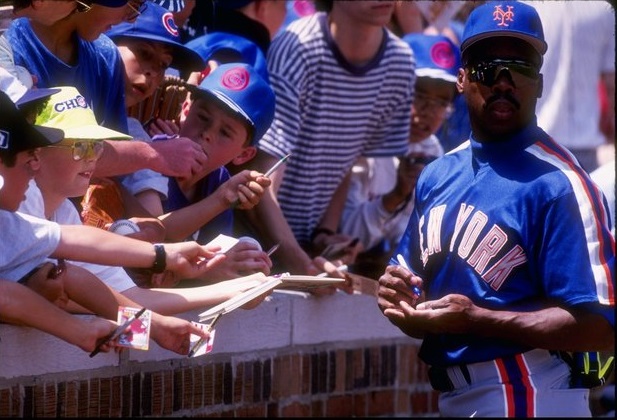
Over the last few months, we’ve recapped the Mets’ history with free agency. Now we’ve reached the worst of the worst. Who was a more disappointing acquisition than Óliver Pérez, Kaz Matsui, or even Jason Bay? That honor goes to a man who haunted the Mets while a St. Louis Cardinal and haunted them even more while playing for the Mets.
There have been plenty of Mets who never lived up to their promise when it came to playing ability. There have been many who were off-the-field distractions. Nobody mastered both like Vince Coleman.
He spent three years in New York and did more damage to the franchise than any other free-agent signing. Through performance, certainly. A six-time stolen base champion in each of his first six years in the majors, he registered 99 as a Met. That would be more than plenty these days, but the time period and his own past history suggest otherwise.
Injuries and suspensions caused a decrease in his primary source of production. Physical health, bad hamstrings specifically, limited him throughout. And the problems caused by actions that had nothing to do with hitting, running, and fielding pale in comparison.
On December 5, 1990, the Mets lured Coleman to Queens in wake of Darryl Strawberry’s departure — replacing a power bat with speed. It was a four-year deal worth $11 million with New York when $11 million was a sizeable amount of money in baseball transactional terms.
Each year from 1985 through ’90, Coleman led the National League in stolen bases — spearheading the St. Louis Cardinals’ vaunted ground attack on their way to two pennants. Coleman set an MLB rookie mark with 110 steals in 1985 and topped 100 in the subsequent two seasons. Even if the on-base percentage wasn’t ideal for a leadoff hitter, his speed alone made him an asset when it came to generating runs and disrupting an opposing pitcher’s game plan.
It’s no coincidence that 1991 began a dark period for the Mets. It was a black eye for the organization and Coleman delivered the haymakers to the foundation.
Over his 235 games, he slashed .271/.336/.356 with an OPS+ of 93. Those are fine numbers if you’re talking about a fourth outfielder — not the main outfielder who’s supposed to be at the top of the lineup. While this (plus the inability to stay healthy) did plenty to damage the Mets’ ability to win consistently during the period of the “worst team money could buy,” it’s all the other things that made it so, so much worse.
He was suspended for shoving manager Jeff Torborg. He feuded with coach Mike Cubbage. In 1992, Coleman was one of three Mets players investigated in a rape allegation until authorities in Port St. Lucie, Fla., determined there wasn’t enough evidence to file charges. In April 1993, Coleman practiced his golf swing in the Mets’ clubhouse, only to smack Dwight Gooden’s arm.
By the time that year was done, he’d been exiled from the Mets — who somehow got another team to take on his baggage. He was dealt to Kansas City (with cash) in exchange for a second go-around with Kevin McReynolds. In fact, Coleman wound up playing four more major-league seasons with four different teams: Royals, Mariners, Reds, and Tigers.
The end of Coleman’s Mets career gave bad meaning to going out with a bang.
The cause was an incident in the Dodger Stadium parking lot in July, when he tossed a firecracker from a car into a crowd and injured multiple people — including two children.
On August 26, with felony charges pending, the Mets told Coleman (with more than a month to go in the season and another year left on his contract) that they were better off without him — and this was a team that wound up with 59 wins. It fully cemented his legacy as perhaps the most disliked player to wear a Mets uniform.















